#Chinese Scrolls
Explore tagged Tumblr posts
Photo

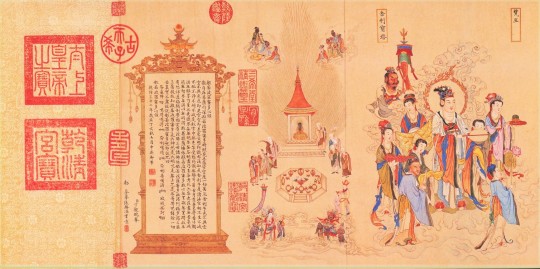
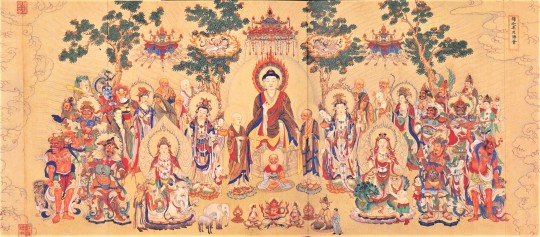
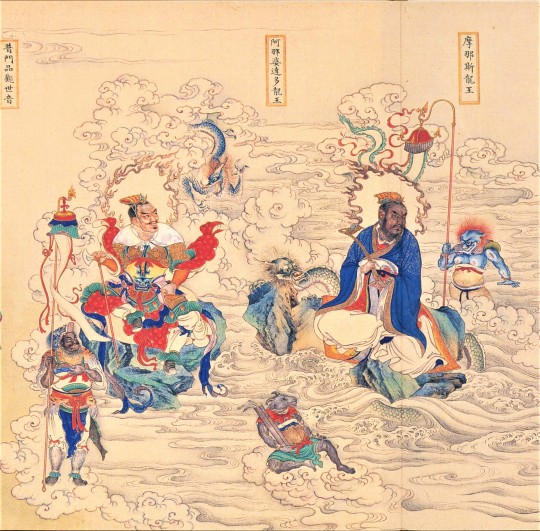


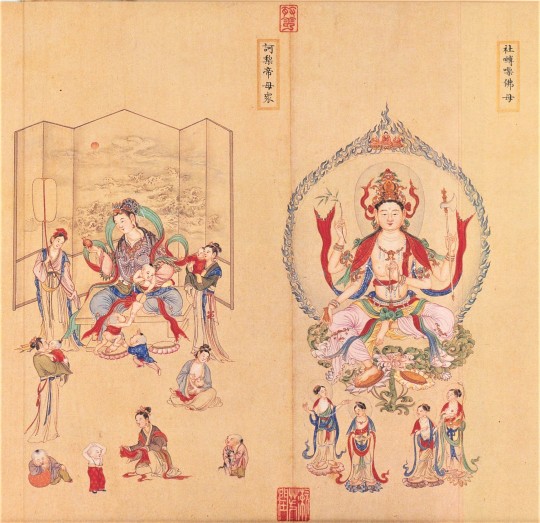
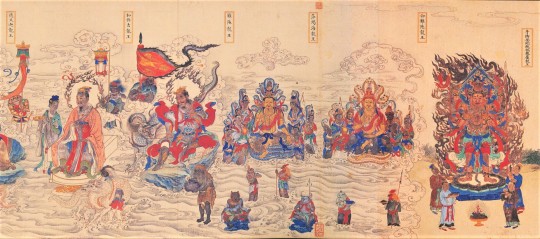


Decorative Sunday
Published in Boston by Shambhala Publications in 2000, The Buddha Scroll is a twenty-first century facsimile of an eighteenth-century reproduction of a twelfth-century work. This accordion-fold book folds out to replicate the 36-foot Qing dynasty scroll, painted by Ding Guanpeng ( 丁觀鵬) in 1767. Ding Guanpeng was commissioned by Emperor Gaozong of Qing to reproduce the Pictorial of Buddhist Icons, completed in 1180 by Zhang Shengwen of the Kingdom of Dali (present day Yunnan Province) after the original work was found water damaged and mismounted.
The Kingdom of Dali and it’s predecessor Nanzhao were situated between Tibet and China and encompassed many ethnic and linguistic groups. Translator Thomas Cleary, who contributed an introduction to the scroll as well as a key to the figures found in the scroll, writes that the depictions in the scroll “reflect the syncretic cultural background of its original model, representing a whole range of Buddhism … it is an unusually eclectic work of art, illustrating the continuity of the many currents that form the great ocean of Buddhism.”
The Buddha Scroll was a gift of Dick Schoen.
Find more Decorative Sunday posts here.
-Olivia, Special Collections Graduate Intern
#Decorative Sunday#The Buddha Scroll#Shambala Publications#Ding Guanpeng#Zhang Shengwen#Kingdom of Dali#Nanzhao#Thomas Cleary#Buddhism#Chinese Scrolls#Chinese scroll paintings#Buddhist Scrolls#Buddhist Scroll Paintings#decorative art#decorative arts#decorative plates#olivia
34 notes
·
View notes
Text

Autumn in Zhouzhuang, Yang Mingyi, 2000
Ink and color on paper scroll 48 x 50.5 cm (18 ⅞ x 19 ⅞ in.)
#art#painting#yang mingyi#contemporary art#asian art#autumn#fall#cats#2000s#ink and color#scroll#works on paper#chinese#artists of color#100 notes#250 notes
319 notes
·
View notes
Text

Pine, Plum, and Cranes, Shen Quan, 1759
#art#art history#Asian art#China#Chinese art#East Asia#East Asian art#Shen Quan#Qing Dynasty#animals in art#birds#waterfowl#cranes#hanging scroll#ink and color on silk#18th century art#Palace Museum
284 notes
·
View notes
Text

ohayoooo. one more for the night
#creepypasta#creepypasta fanart#bloody painter#creepypasta bloody painter#its actually saddening to scroll thru pics/fanart of them.. everyone makes him into this american guy when he's chinese. no ethnic features
156 notes
·
View notes
Text


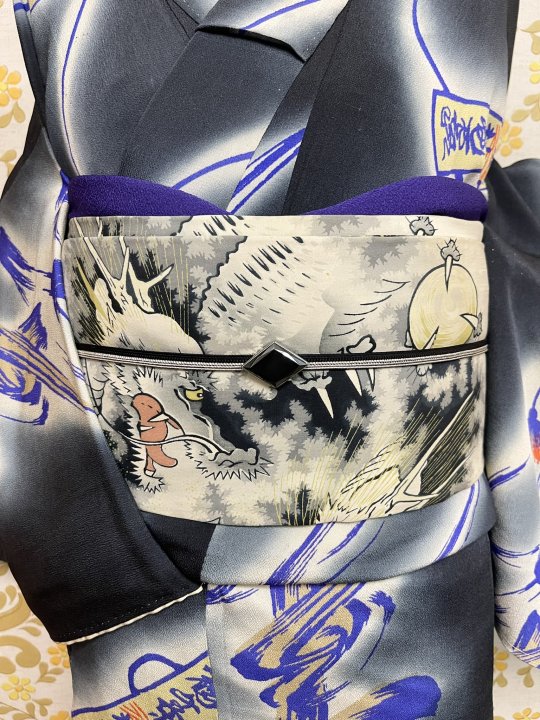
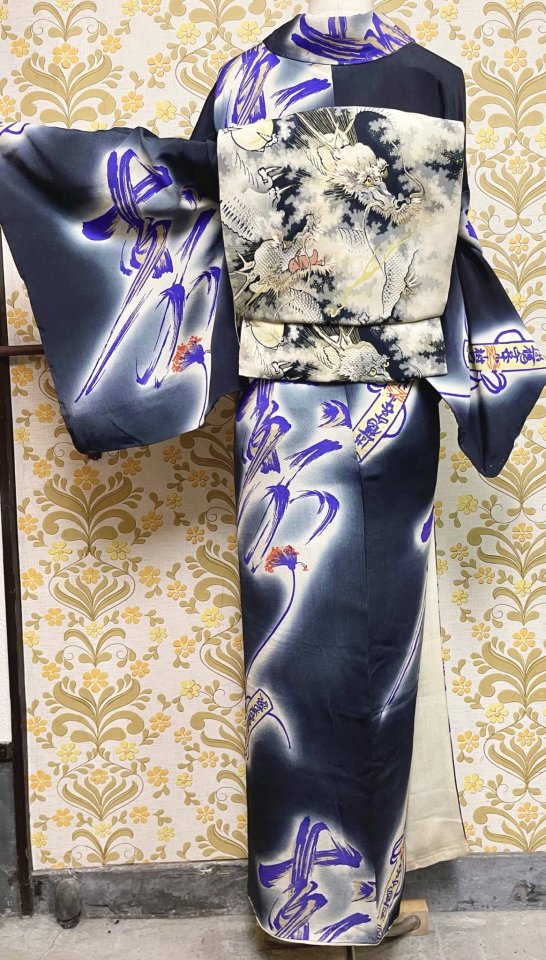
Striking celebratory outfit, pairing a kimono with auspicious kotobuki (long life kanji 寿) and hôkan (lit. "precious scrolls", ie sacred texts rolled into their cases), and powerful dragons nestled among thundery clouds.
#japan#fashion#kimono#obi#dragon#new year#lunar year#chinese zodiac#ryuu#cloud#kumo#kotobuki#auspicious kanji#hokan#houkan#precious scroll#scroll#makimono#着物#帯
166 notes
·
View notes
Note
Chinese reg is weird
careful! your inner prejudices about poc characters is showing!
anyway. chinese reg freaking out the first time he sees a broom, as it is common superstition in chinese culture that brooms are inhabited by spirits and so should not be used for playing games with, only cleaning. five year old regulus speaking firmly to his broomstick before hopping on it in the garden, gravely informing the spirit inside that if it doesn’t behave he will throw it in the fire. oh, and he blames the spirit every time he loses a quidditch match.
#a#only thing that’s weird here is your lack of open-mindedness buddy. anyone can hc reg however they want! he’s not real xx#i respect anyone’s right to hc a character as white or any other race tbh so let my boy live his life as a little chinese boy#chinese house of black#↤ scroll through this and leave any prejudices behind. open mind open heart etc#regulus black
59 notes
·
View notes
Text

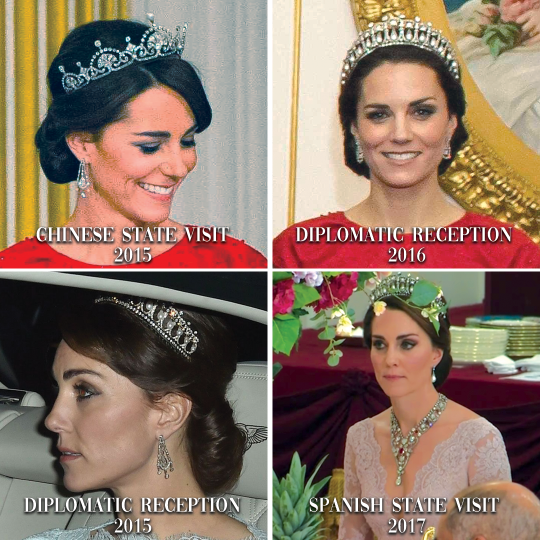
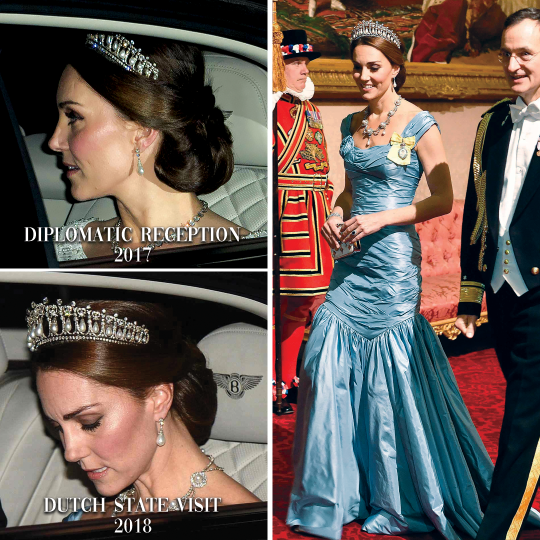
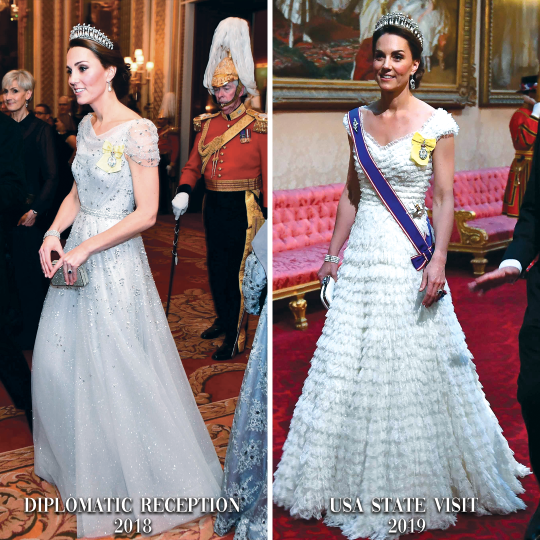


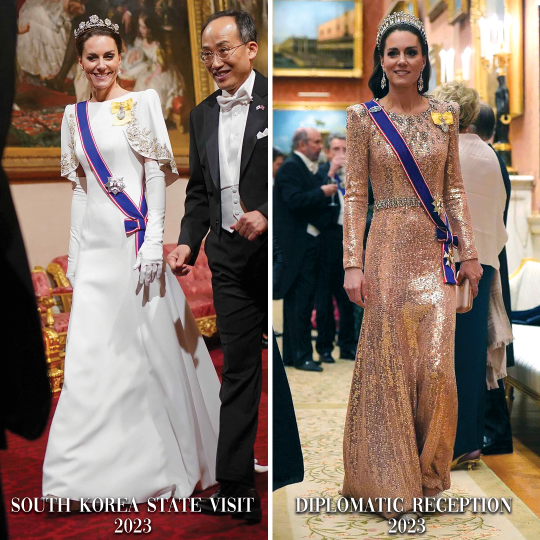
The Princess of Wales and Tiara Appearances | since her wedding day
#mine#royaltyedit#kate#tiara#uk: strathmore rose tiara#uk: halo scroll tiara#uk: queen mary's lovers knot tiara#uk: lotus flower tiara#outfits#ballgowns#wedding#diplomatic reception 13#diplomatic reception 15#diplomatic reception 16#diplomatic reception 17#diplomatic reception 18#diplomatic reception 19#diplomatic reception 22#diplomatic reception 23#chinese state banquet 15#spanish state visit 17#dutch state visit 18#us state visit 19#hussein and rajwa#sa state visit 22: banquet#south korea state visit: banquet
158 notes
·
View notes
Text
Red Lotus and Mandarin Ducks
Zhang Daqian
1943
Ink and colour on paper scroll
165 x 82 cm.
65 x 32 ¼ in.
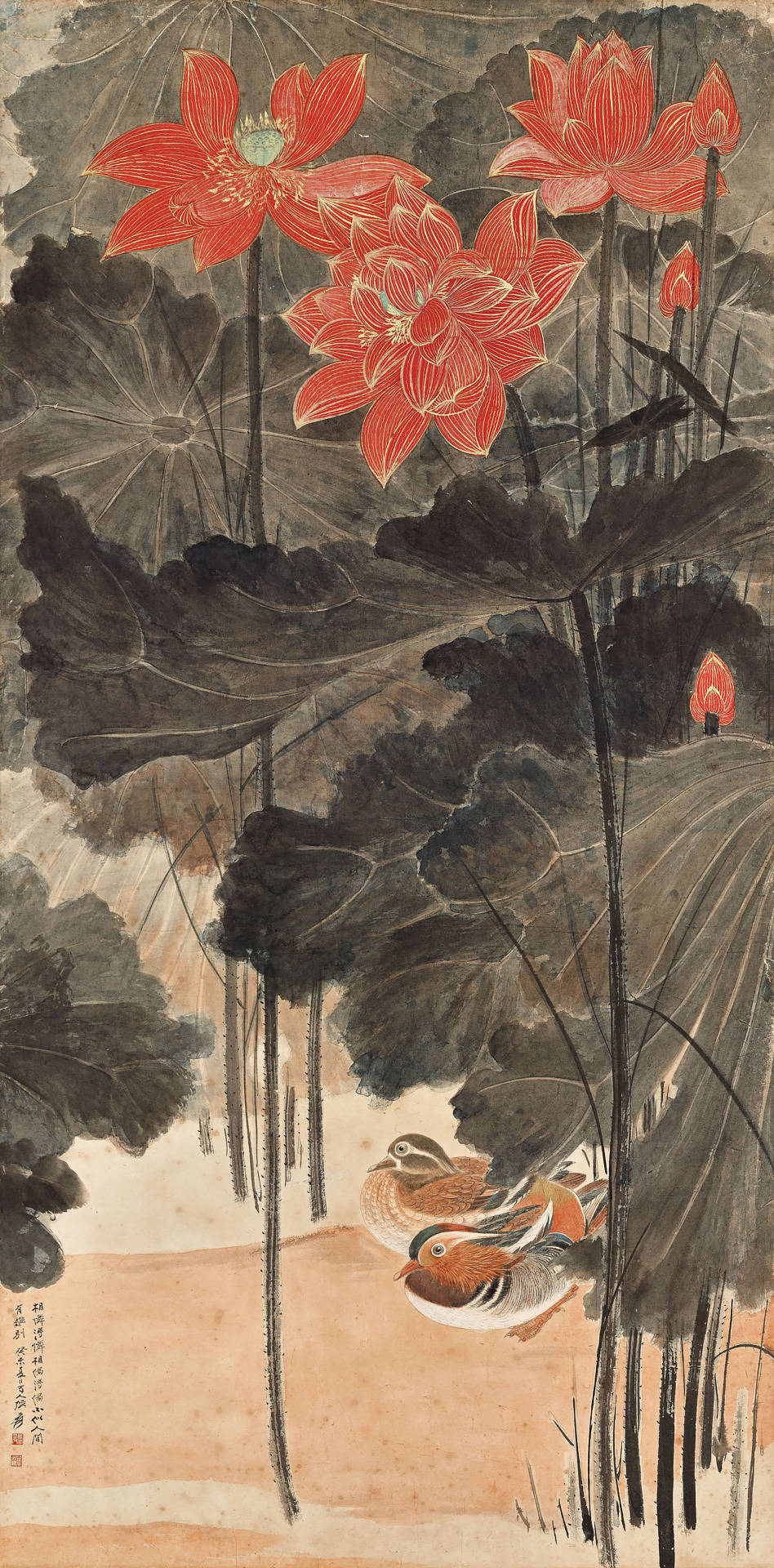
#Zhang Daqian#Red Lotus and Mandarin Ducks#1943#Ink and colour on paper scroll#165 x 82 cm.#65 x 32 ¼ in.#chinese artist painter#chinese ilustration painter#chínese colorprint illustration#artwork#art#chinese art#chinese aesthetic#chinese painting#chinese artist#guang we#octopussi#xpuigc#xpuigc bloc
23 notes
·
View notes
Text




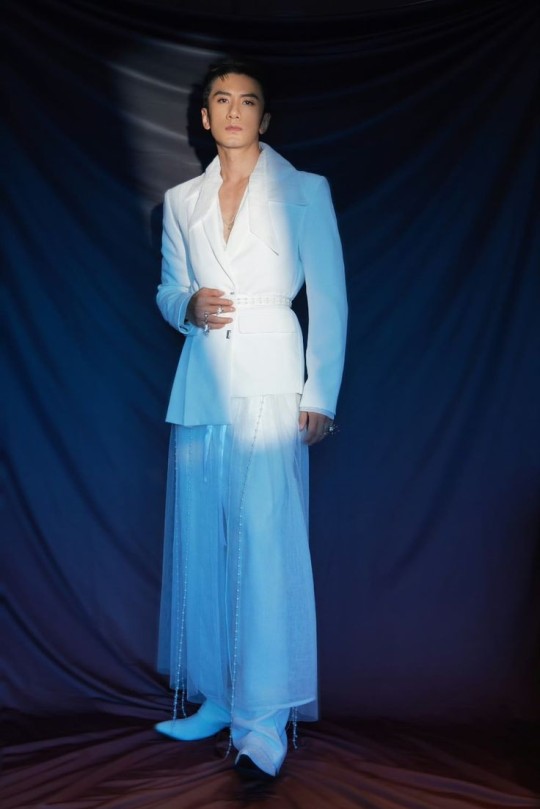



#March 23rd#happy brithday#Happy birthday to Xiao Shunyao!#I didn't know what to post to celebrate his birthday#I scrolled through so many photos and images#He was stunning in all of them#I chose this photoshoot in the end#so fascinating#so hot and sexy#happy bday#di feisheng#a fei#xiao shunyao#mysterious lotus casebook#till the end of the moon#the blue whisper#cdrama#chinese drama#shui long yin
42 notes
·
View notes
Text

Qian Xuan, Young nobleman on horseback, a handscroll painting Yuan dynasty, 27th year of Zhiyuan (1290), China
#Qian Xuan#chinese artist#chinese painting#chinese painter#chinese art#asian art#horses#beautiful horse#beautiful animals#horseback riding#equestrian#aesthetic#beauty#scroll painting#art history#aesthetictumblr#tumblraesthetic#tumblrpic#tumblrpictures#tumblr art#tumblrstyle#artists on tumblr
70 notes
·
View notes
Photo

The frontispiece to the world’s earliest dated printed book, the Chinese translation of the Buddhist text the Diamond Sutra. This consists of a scroll, over 4.8 meters long, made up of a long series of printed pages. Printed in China in 868 CE, it was found in the Dunhuang Caves in 1907, in the North Western province of Gansu.
260 notes
·
View notes
Text
it's incredible how many shit takes I've seen while just scrolling casually for Chinese media featuring the famous cultural figures
like "it's ok to ship Nezha with an oc or self ship with Nezha bc his real age isn't even confirmed to be a child anyways irl"
just. I don't care what fandom or whatever this is. garbage take. his most prominent depiction is a child. also why do you want to ship your characters with a Chinese deity so badly. is it bc the gods matter less? bc they're not Western?
it is also quite gross to see people wanting to ship anyone with The Bodhisattva. like genuinely do critical thinking for why it is gross.
#jttw#journey to the west#I don't even want to tap the sign for why deciding that a canonical self inserted love interest with Sun Wukong is also gross#it is perfectly okay for a very prominent cultural figure with no romantic relations to NOT HAVE ANY AND BE HAPPY WITH THEMSELVES#lego monkie kid taking actual names from prominent Chinese figures and adding them to their shit cartoon was a mistake#don't even tie it back to jttw and let me fucking scroll jttw stuff in piece#lmk
9 notes
·
View notes
Text

Lotus Lantern, Deng Fen, 1963
Ink and color on hanging paper scroll 52 ¾ x 23 ¼ in. (134 x 59 cm)
#art#painting#deng fen#asian art#20th century#20th century art#1960s#modern art#scroll#works on paper#ink and color#chinese
34 notes
·
View notes
Text

Title: Bamboo and Rocks Artist: Zheng Xie (Chinese, 1693-1766) Date: ca. 1760 (Qing Dynasty) Genre: bamboo painting Medium: hanging scroll (ink on paper) Dimensions: 172 cm (67.8 in) high x 99.4 cm (39.2 in) wide Location: Minneapolis Institute of Art
#art#art history#Zheng Xie#Asian art#China#Chinese art#Imperial China#East Asia#East Asian art#bamboo painting#calligraphy#Qing Dynasty#18th century art#hanging scroll#ink on paper#Minneapolis Institute of Art
108 notes
·
View notes
Text

MWW Artwork of the Day (10/12/24) Zhu Zhanji (Emperor Xuanzong)(Chinese, 1399-1435) Three Yang [Goats], an Auspicious Start (to the New Year)(1429) Hanging scroll, ink & colors on paper, 211.6 x 142.5 cm. National Palace Museum, Taipei
In this ink painting with light colors from the fourth year of Xuanzong's reign (1429) are a ewe and two lambs with a background of bamboo, rocks, and camellias. The subject of three goats is a homophone for "Three Yang, an Auspicious Start to the New Year." This title comes from the Book of Changes, which consists of 64 hexagram (six-line) combinations of trigrams (three-line symbols). The eleventh hexagram translates literally as "Earth (and) Heavens (at) Peace" and is represented by the symbol. With the three lines of qian (yang) below and three of kun (yin) above unified and harmoniously connected, it symbolizes peace throughout the heavens and earth.
7 notes
·
View notes
Text
For #WorldLemurDay:
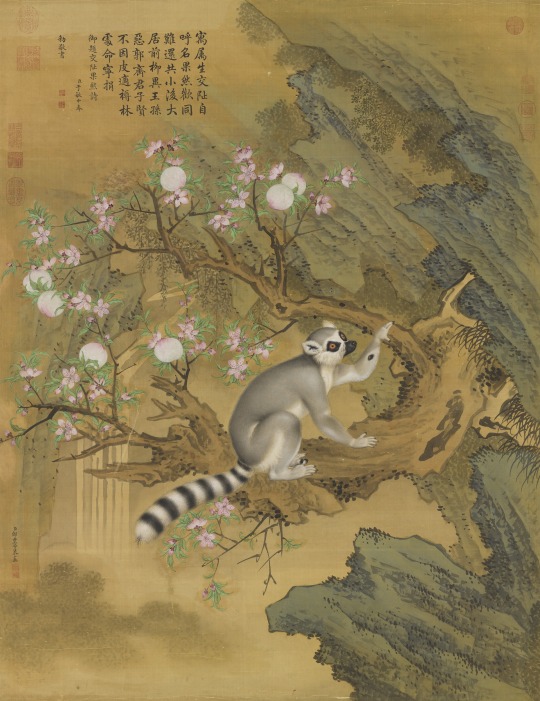
Giuseppe Castiglione (Italian, 1688-1766) Cochin Lemur, 1761 Qing Dynasty, China Hanging scroll, ink & colors on silk 109.8 x 84.7cm National Palace Museum, Tapei
Lemurs are of course not native to China, but rather endemic to Madagascar. This one was given to the Qianlong Emperor by the King of Vietnam, who likely got it from European traders. It was then painted by Castiglione, an Italian Jesuit missionary who served as an artist in the Chinese imperial court. The background was likely painted by Jin Tingbiao (Chinese, d. 1767). A truly international history!


🆔 Castiglione’s lemur is easily identifiable as a Ring-Tailed Lemur (Lemur catta), but note the level of morphological detail - he included the antebrachial gland on the forearm (used for scent marking), and the tail appears to have suffered some loss at the tip.
#animals in art#animal holiday#lemur#ring-tailed lemur#primates#scroll art#hanging scroll#Chinese art#Asian art#East Asian art#18th century art#ID#World Lemur Day#Giuseppe Castiglione#Jin Tingbiao#Qing Dynasty#animal diplomacy
43 notes
·
View notes